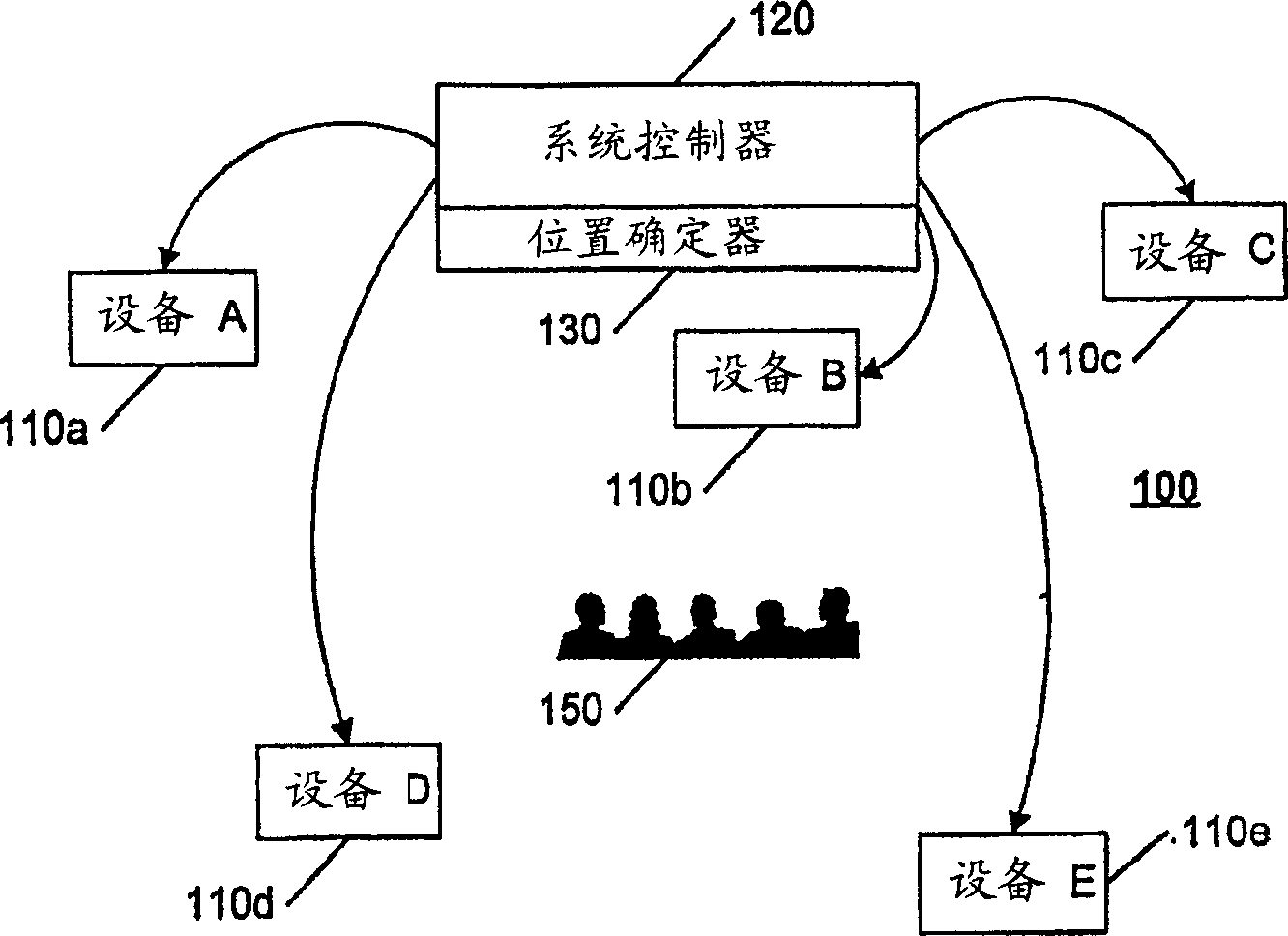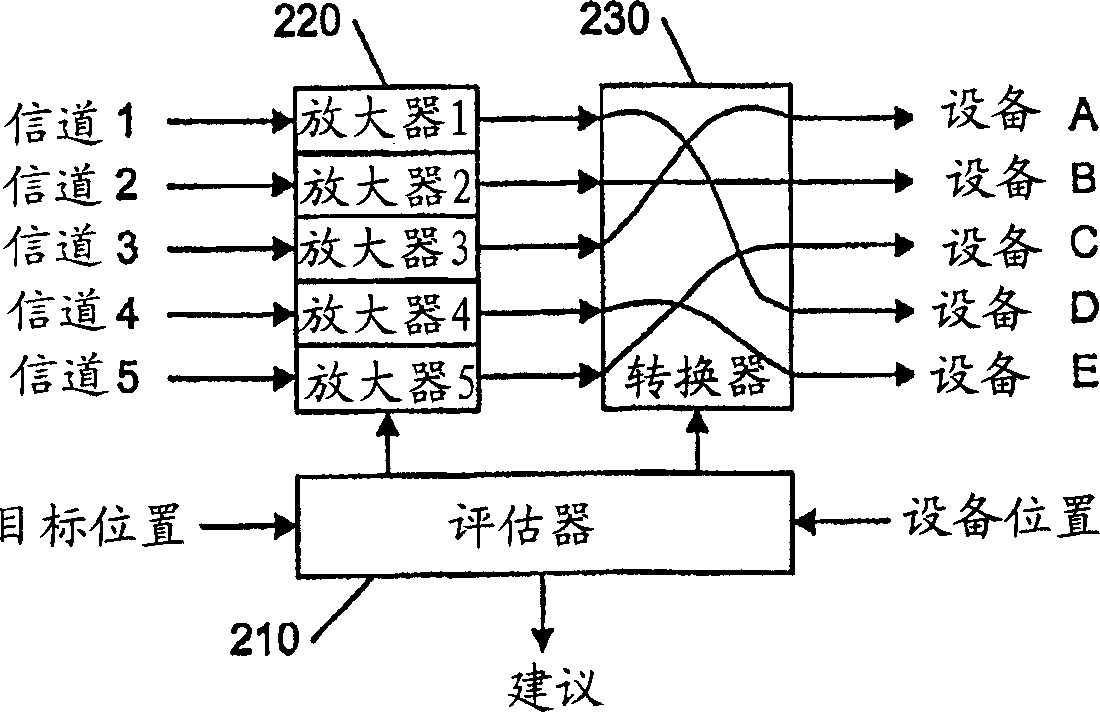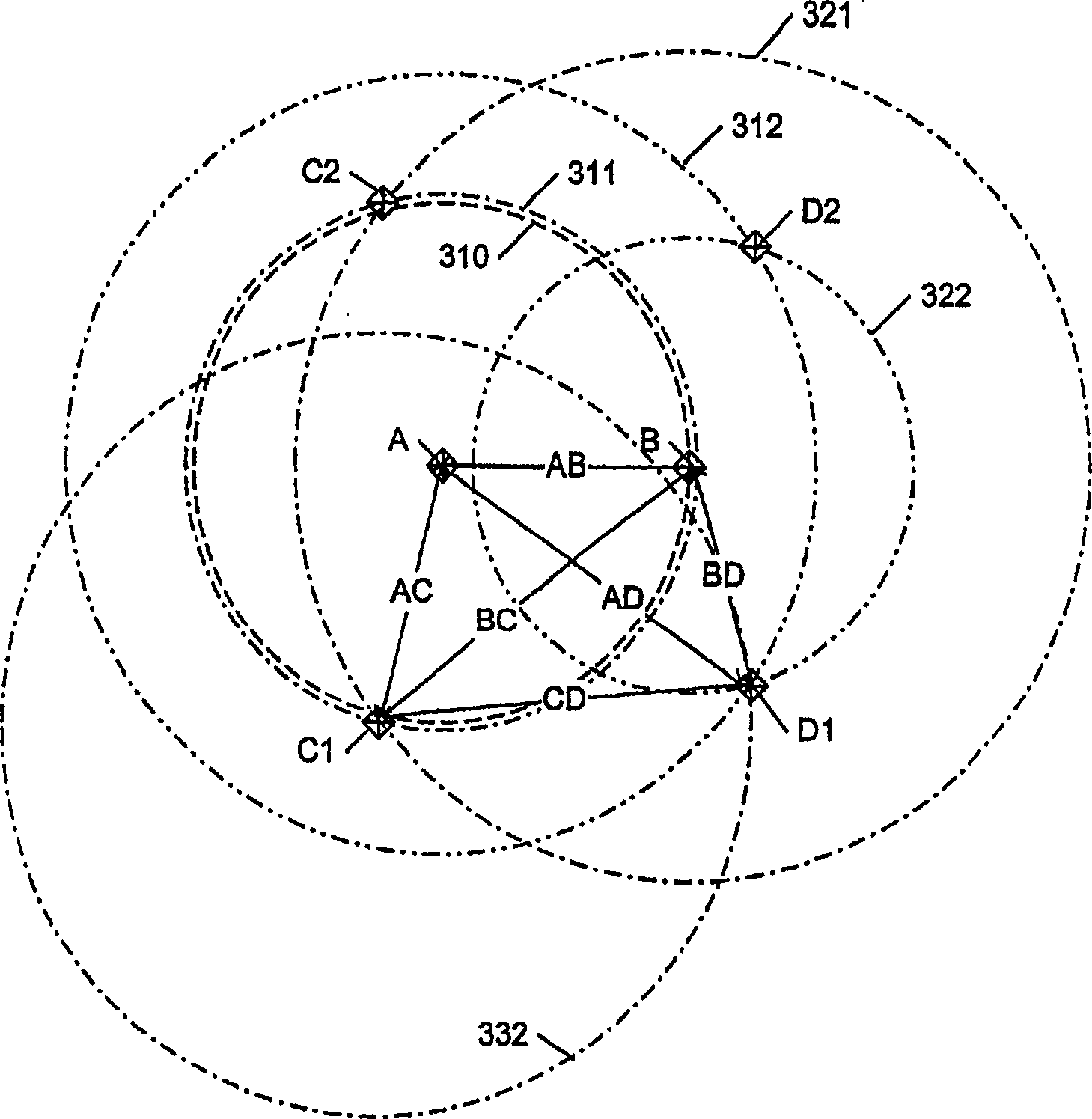Peer-based location determination
A determiner and system technology, which is applied in the arrangement, positioning, measurement device and other directions of speaker shells, can solve problems such as reducing the subjectivity of analysis, and achieve the effect of optimizing system performance and improving system performance.
- Summary
- Abstract
- Description
- Claims
- Application Information
AI Technical Summary
Problems solved by technology
Method used
Image
Examples
Embodiment Construction
[0012] For ease of presentation and understanding, the invention is represented here using the example of an audio system having distributed speakers for radiating sounds and microphones for detecting these sounds. It will be apparent to one of ordinary skill in the art, following this description, that the invention can be applied to other systems having distribution equipment, and is independent of the particular transmission and reception techniques used.
[0013] figure 1 An example system 100 is shown having multiple devices 110a-e distributed in an environment. Taking the audio system as an example, devices 110a, 110b and 110c correspond to left, center and right front speakers, respectively, while devices 110d and 110e correspond to left and right rear speakers, respectively. A system controller 120 controls the signals provided to each device 110a-e. For ease of reference, the identifier 110 is used below to refer to any or all of the devices 110a-e when the context ...
PUM
 Login to View More
Login to View More Abstract
Description
Claims
Application Information
 Login to View More
Login to View More - R&D
- Intellectual Property
- Life Sciences
- Materials
- Tech Scout
- Unparalleled Data Quality
- Higher Quality Content
- 60% Fewer Hallucinations
Browse by: Latest US Patents, China's latest patents, Technical Efficacy Thesaurus, Application Domain, Technology Topic, Popular Technical Reports.
© 2025 PatSnap. All rights reserved.Legal|Privacy policy|Modern Slavery Act Transparency Statement|Sitemap|About US| Contact US: help@patsnap.com



